County Index
By Name : By Type
Smaller sites are listed in the alphabetical index
Brecknock. :
Bristol :
Cards. :
Carms. :
Derbys. :
Gloucs. :
Hants. :
Pembs. :
Somer. :
Surrey :
Sussex :
Undisc.
Historically, every county has had its own distinctive style and types of building depending on the needs of its people, economy, underlying geology and raw materials. Although regional differences in architecture have diminished with the age of cheap bulk transport, even today building type can vary widely by region. Here I have listed all of the buildings featured on this site by historical county (pre-1975).
Brecknockshire/Sir Frycheiniog
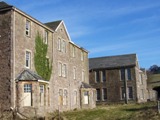 |
Mid Wales Hospital
A large turn-of-the-century psychiatric institution hidden amongst the Brecon Beacons and slowly rotting from the top down after conversion plans fell through in 2008. | 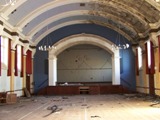 |
City & County of Bristol
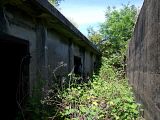 |
Purdown: Bristol No. 6 H.A.A. Battery
The guns of Purdown Heavy Anti-Aircraft Battery once defended Bristol from air raids but the battery now stands overgrown in the shadow of the city's landmark BT Tower. | 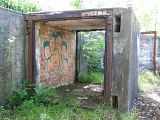 |
Back to top
Cardiganshire/Sir Ceredigion
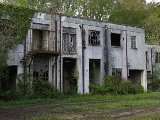 | Pont Llanio Milk Factory
A factory and distribution depot set up by the Milk Marketing Board in 1937 to process milk from local farms. Closed in 1970, it has stood empty for nearly half a century. | 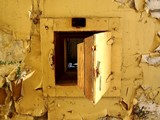 |
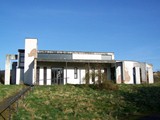 |
Welsh Martyrs' Church
A striking modernist church plagued by problems with the flat roof which forced it to close in 2008. | 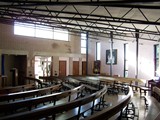 |
Back to top
Carmarthenshire/Sir Gaerfyrddin
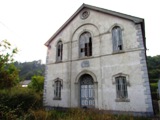 |
Capel Troedyrhiw
An impressive yet understated Victorian Welsh Independent chapel furnished with carved woodwork, stained glass and cast iron, abandoned as congregations and fortunes declined in the early 21st century. |  |
Back to top
Derbyshire
 |
Willington Cooling Towers
These massive hyperboloid cooling towers, the so-called five brothers of Willington, are the last remnant of two enormous coal-fired power stations which together could produce 125 MW of electricity | 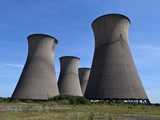 |
Back to top
Gloucestershire
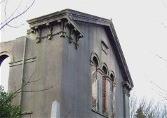 |
Kingswood Wesleyan Chapel
A large Victorian chapel built in the suburbs of Bristol, one of the birthplaces of modern Methodism. | 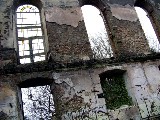 |
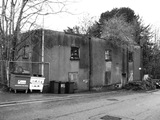 |
Whitefield's Tabernacle
An historic nonconformist church established by Methodist pioneers George Whitefield and John Cennick in 1741. | 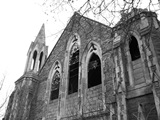 |
Back to top
Hampshire
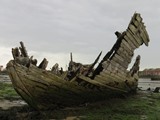 |
Forton Graveyard of Ships
The remains of small a shipbreaking business comprising dozens of derelict vessels; minesweepers, trawlers, gunboats, landing craft and more, all decaying slowly into the harbour mud. | 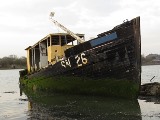 |
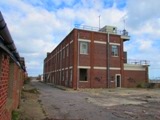 |
Fraser Gunnery Range
A disused Naval gunnery school, missile range and Admiralty RADAR Research Establishment which closed in 2006. |  |
Back to top
Pembrokeshire/Sir Benfro
Back to top
Somerset
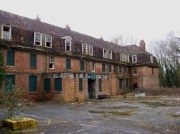 |
Barrow Hospital
A hospital designed in the 1930s to be a progressive centre for treating diseases of the mind. The full plan was never finished but the hospital served for 75 years, closing in 2006. | 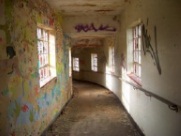 |
Back to top
Surrey
.JPG) |
Baynards Works
In 1937 the Steetley Chemical Co. began operations at Baynards making batteries and pesticides. Activity on site ceased in 2005 leaving 80 acres of heavily contaminated land and buildings.
| 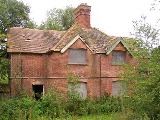 |
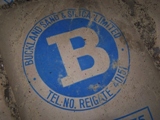 |
Buckland Sand & Silica
Buckland Sand and Silica Works was founded in 1925 and was once the source of fine sands for the British glass and industry, but closed in the 1990s following a change of ownership | 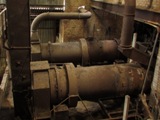 |
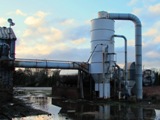 |
Clock House Brickworks
Clock House Brickworks was established in the 1930s as a factory for ceramic blocks. In 1945 it was acquired by London Brick who switched production to multi-stock bricks. Under Hanson from 1984, the brickworks enjoyed considerable success but 25 years later was forced to close by the recession. | 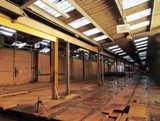 |
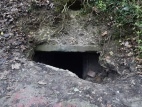 |
Coulsdon Deep Air Raid Shelter
A WWII public air raid shelter which later found use in making lenses for telescopes and television cameras; now a hangout for ravers and misbehavers. | 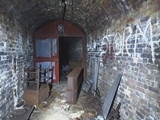 |
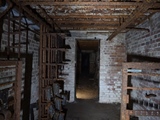 |
Deepdene: Southern Railway Bunker
At the outbreak of the Second World War, the Southern Railway Company evacuated their traffic control and telephone operations to the former Deepdene Hotel in Dorking, taking advantage of an extensive system of sandstone caves to establish an underground communications hub which now lies abandoned under a forest of rhododendrons. | 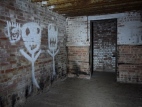 |
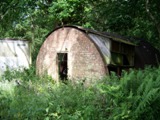 |
Dunley Hill Camp
A WWII Canadian Artillery camp hidden in the woods of Ranmore Common near Dorking, a small part of the enormous Canadian presence on the North Downs during the early 40s. | 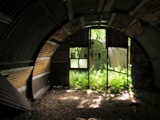 |
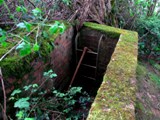 |
R.A.F. Dunsfold
A class 'A' Bomber airfield built in 1942 for the Royal Canadian Air Force. After the War, it played a vital role in the development of the Harrier VTOL aircraft and other defence projects as a factory for Hawker and BAe. Surviving features include runways, buildings, shelters and an underground bunker. | 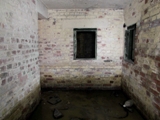 |
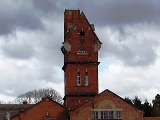 |
The Epsom Cluster
A 'mini-site' charting the rise and decline of West Park, St. Ebba's, Horton, Long Grove and the Manor; the five rambling Edwardian 'asylums' on the east side of Epsom. | .JPG) |
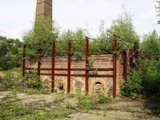 |
Ewhurst Brick Works
Established in the 1920s by the firm of A. Hone, Ewhurst produced stock bricks of Weald Clay until its closure in the 1980s. |  |
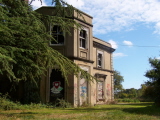 |
Hollywood Lodge
A Georgian gentleman's residence bought by hospital authorities in the 1930s and used as an annexe to The Manor and West Park Mental Hospitals until 2003. | 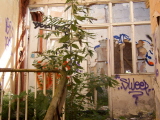 |
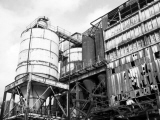 |
Laporte Earths
A hellish maze of conveyors, silos, calciners, mills and pipes used to produce granular fuller's earth for the chemical, woollen and pet-litter industries.
| 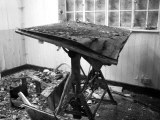 |
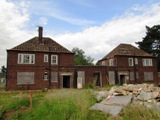 |
Milford Hospital
A former tuberculosis sanatorium built by Surrey County Council in the late 1920s. Converted to a geriatric rehabilitation centre in the 1980s, a major reorganisation in 1997 saw many of the central services and ward buildings abandoned.
| 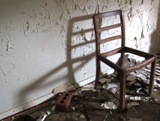 |
.JPG) |
Nutbourne Brickworks
A substantial 1930s brickworks comprising dryers, moulding sheds, milling plant, a smithy, canteen and the remains of a narrow gauge railway system. | .JPG) |
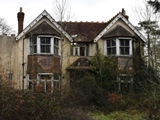 |
Oaklands Park House
The Victorian mansion at Oaklands Park was built c. 1890, probably for Capt. Richard Elliott Palmer (b.1853), formerly of the Kerry Militia, and his wife Mrs Minnie Merritt Palmer (b.1856) a cycling enthusiast and patron of the arts. Having been abandoned around 1998, it has now been derelict almost twenty years. | 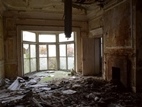 |
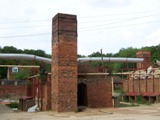 |
Swallow's Tiles Ltd.
A well-preserved small-scale Victorian tile and terra-cotta works which produced handmade clay tiles in the traditional way until forced to close in 2008. | 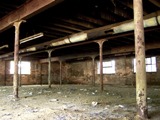 |
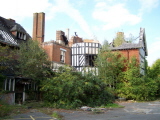 |
Tangley Place
A Victorian mansion and later laboratories used by the M.A.F.F. as a field station for animal testing. Closed in 1996, devastated by arson and collapsing in on itself. | 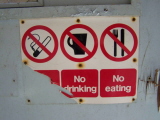 |
 |
Tatsfield Receiving Station
This derelict BBC Technical station which monitored domestic and foreign broadcasts was the first place in Britain to recieve signals from the Russian satellite Sputnik I. |  |
 |
Weyburn Engineering Works
A large rural factory established in 1913 which made precision components for cars, trucks, aeroplanes and even tanks for over 90 years but closed in 2008 following the bankruptcy of its American owners. | 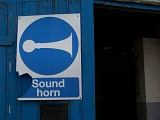 |
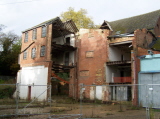 |
Wonham Mill
An eighteenth century flour mill and mill house, much extended in 1914. It was bought by developers in 2007 but mysteriously abandoned mid-conversion. | 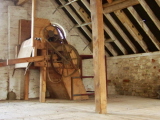 |
 |
Worms Heath Igloo 2 H.A.A. Battery
An anti-aircraft gun site built in the early years of the Cold War as part of the short-lived and little-known Nucleus/Igloo programme to provide artillery-based defence against Russian bombers. |  |
Back to top
Sussex
 |
Abingworth Nurseries
A long-disused mushroom farm hiding an unexpected potpourri manufacturing outfit. A victim of cheap imports and changing tastes.
|  |
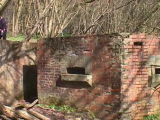 |
Arun Stop Line
WWII defences surrounding the nodal point of Horsham - pillboxes, obstacles, gun emplacements designed to hinder a Nazi invasion that fortunately never came.
| 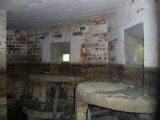 |
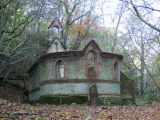 |
Bedham Mission Church
A tiny abandoned church, also doubling as a schoolroom, hidden in the backwoods of the Sussex Weald.
| 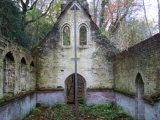 |
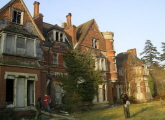 | Beedingwood
A remarkable house built in 1876 for philanthropic bacon merchant Thomas Denny. It later became part of a pioneering rehabilitation hospital but closed in 1983. | 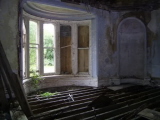 |
 | Chichester RAF Distribution Depot
A well-preserved defended fuel depot built to serve fighter airfields on the South Coast during the Second World War. The depot remained in use into the 1990s and retains many of its original features including bunkers and machinery. |  |
 | Cocking Limeworks
Limeburning at Cocking started before 1830, but the present works was built in 1920s to supply lime to the local brick industry and continued working up until 1999. |  |
 |
St Michael's Orphanage or Jameah Islameah School
A redbrick gothic orphanage designed by Edward Pugin, St Michael's later served as a Catholic Seminary, a school of Ballet and an Islamic school which became the centre of a high profile police raid following intelligence reports of terrorist training camps being held in the grounds. Though the main building still serves as a Muslim community, the old chapel has been left to decay. | 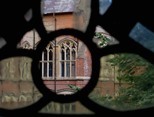 |
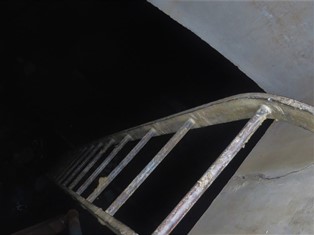 |
Sharpenhurst Reservoir
A small Edwardian reservoir supplying a local school, drained of water and undergoing conversion to a recording studio. | 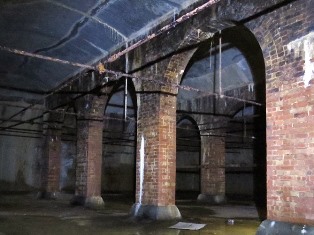 |
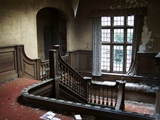 |
Steep Park
A rambling Victorian mansion, formerly home to a wealthy artisan and his wife, which fell into ruin after their deaths at the turn of the 21st century. | 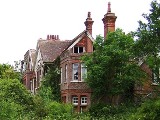 |
Back to top
Undisclosed & Other
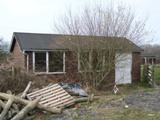 |
Atmospheric Station 'F'
A small research station built in the 1950s to monitor meteorological phenomena and test scientific instruments for a local university. |
 |
 |
Crychydd Woollen Mill
A mid-Victorian woollen mill which ran one of the first public electricity schemes in Wales and once sent products all over Britain. | 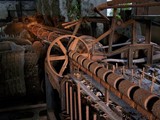 |
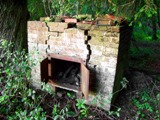 |
Lost Gardens
A brief history of the rise and decline of the country house garden and a compilation of pictures of gardens in decay. |
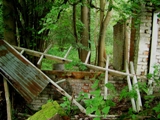 |
Back to top
Home.
| |
The Derelict Miscellany: website and all content © D. A. Gregory unless stated to be otherwise.
|
|